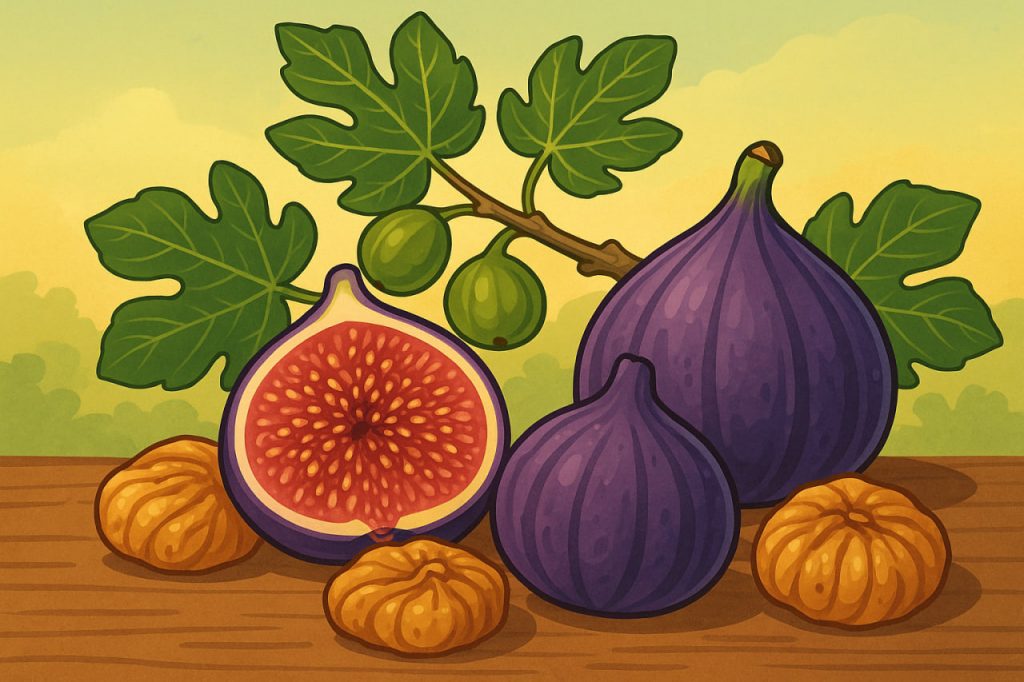Fig (Ficus carica) is one of the oldest cultivated fruits in the world, valued for its sweet taste, high nutritional content, and symbolic importance in many cultures. Native to the Middle East and Mediterranean regions, figs have been grown for thousands of years and are still popular worldwide today.
Botanical Characteristics
The fig tree is a member of the mulberry family (Moraceae). It is a small deciduous tree with broad leaves and can live for several decades. Unlike many fruits, the fig is not a single fruit but a collection of tiny flowers and seeds enclosed within a fleshy structure, known as a syconium.
Nutritional Value
Figs are rich in essential nutrients, making them highly beneficial for health:
- Dietary fiber – supports digestion and prevents constipation.
- Vitamins – especially vitamin B6, vitamin K, and small amounts of vitamin A.
- Minerals – calcium, potassium, magnesium, iron, and copper.
- Antioxidants – polyphenols that help protect cells from damage.
Fresh figs are naturally sweet, while dried figs are even more concentrated in sugar, fiber, and minerals.
Health Benefits
- Digestive health – High fiber content improves bowel movement.
- Bone strength – Calcium and magnesium support strong bones and teeth.
- Heart protection – Potassium helps regulate blood pressure.
- Energy source – Natural sugars make figs a quick source of energy.
- Blood health – Iron helps in the formation of red blood cells.
Cultural and Historical Significance
Figs appear in ancient texts, including the Bible, the Quran, and Greek mythology, symbolizing fertility, abundance, and knowledge. In many regions, fig leaves and fruits are used in rituals, medicine, and traditional diets.
Uses in Cuisine
- Fresh – eaten raw as a fruit.
- Dried – popular as a sweet snack or ingredient in desserts.
- Cooking – added to salads, jams, baked goods, and sauces.
- Traditional medicine – used in herbal remedies for digestion and respiratory health.
Conclusion
The fig is more than just a fruit—it is a cultural symbol, a source of vital nutrients, and a versatile ingredient in global cuisine. Its long history of cultivation and wide health benefits make it one of nature’s most valuable foods.
Glossary
- Ficus carica – the scientific name of the fig tree.
- Syconium – the unique structure of the fig, containing flowers and seeds inside.
- Polyphenols – natural plant antioxidants that protect against cell damage.
- Deciduous – a type of tree that sheds its leaves annually.
- Antioxidant – a substance that reduces harmful effects of free radicals in the body.


